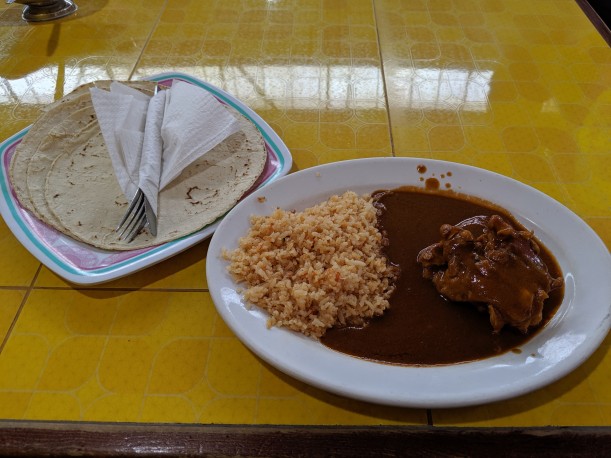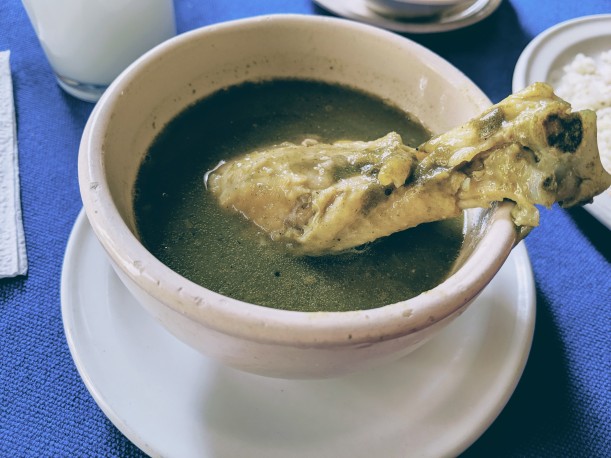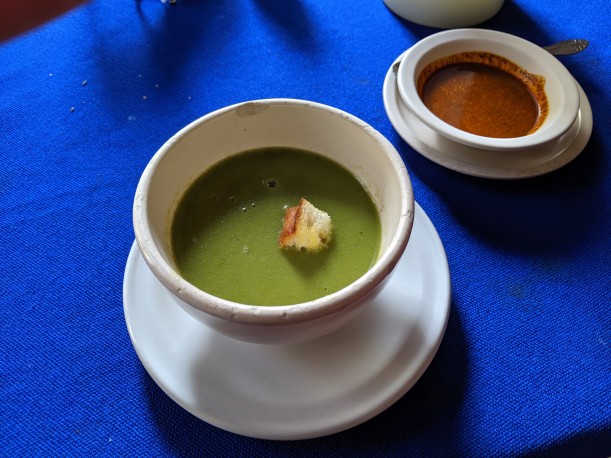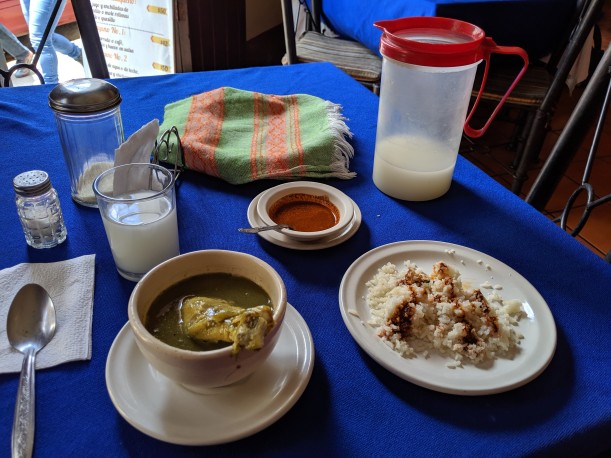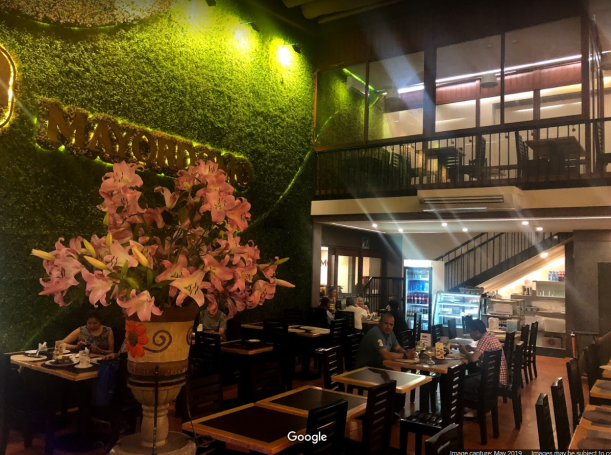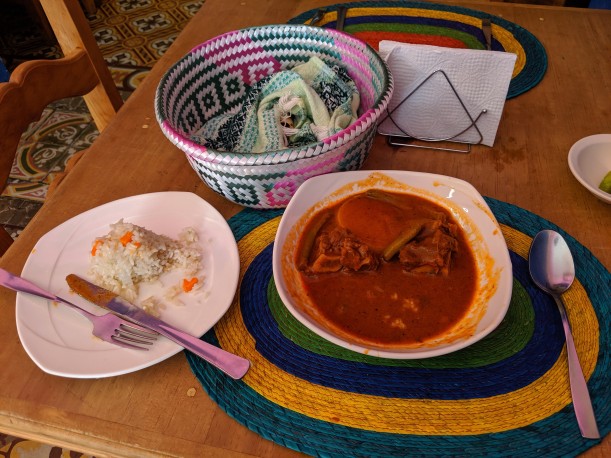It was bound to happen – the more we got into these moles, the more things would get complicated, and things have gotten a lil complicated
One of the moles here is mole coloradito – you might translate this as ‘tinted red’ mole. This is distinct from mole rojo (also…’red’ mole???), although the difference between the two is unclear. Also unclear is whether ‘coloradito’ as you see it advertised on the street is mole or not. Puerco en chile colorado is essentially braised pork in red chile sauce, but it’s definitely not mole. So when there’s ‘pollo coloradito’ here, is it mole or is it just chicken cooked in a red chile sauce??? Impossible to tell??
I decided I would do what I do best – put this off. Walking around 20 de Nov. market, I saw a single place that advertised mole rojo, and happily sat down and ordered it. Most places have coloradito but nowhere said ‘mole coloradito’. I tried not to think about it.
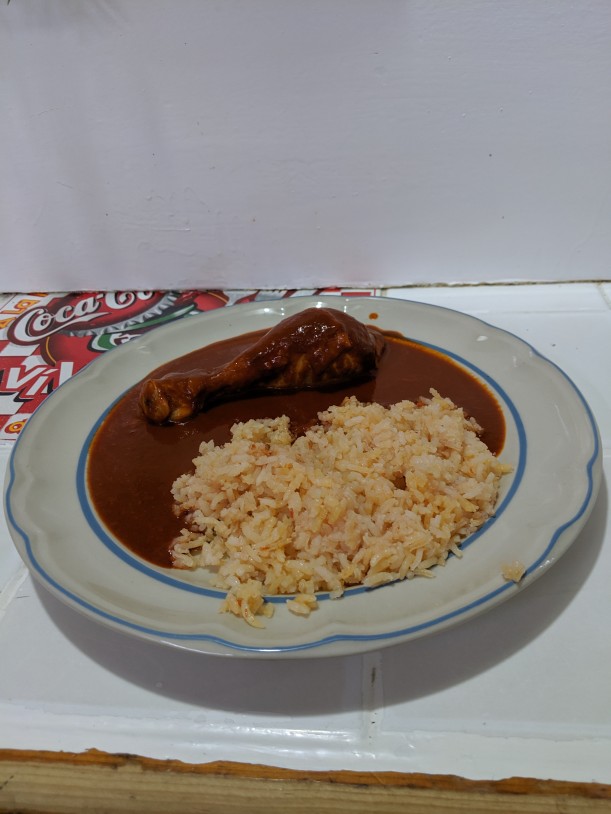
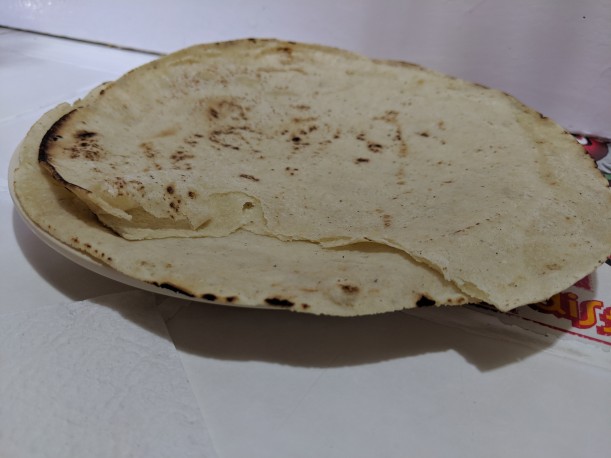
The mole was good, spices, fork-tender perfectly cooked chicken, blahblahblah you’ve read enough descriptions of mole that we don’t need to go over that. I WILL point out that these tortillas were just incredible. Tearing them felt like pulling apart a soft tissue and they were slightly sweet and just a little toasted while still somehow pillow-soft. Honestly with just a little butter I could eat a stack of these on their own.
But after I was done, I decided I needed a plan for mole 6, so I leaned over the counter and asked the lady there if I could ask her a question.
I started with something basic – what’s the difference between mole colorado and mole rojo?
Well, she told me, in fact the mole I just served you is actually mole coloradito.
And that was the first time in my stay here that I had been so egregiously backstabbed in Oaxaca

I’ve never seen the Hills and I assume you have not either
She told me that in this market, since a lot of tourists come through, people don’t really make mole rojo because it’s so spicy it doesn’t sell well. She told me that mole rojo is actually more like just chicken cooked in the kind of salsa we put on tacos. She said mole rojo is a sauce made of tomato, garlic, chile, salt and pepper, picking up the salsa they have on the counter and tasting it, wincing a bit as it was spicy even for her.
That salsa was really tasty (and yes, really spicy), but it wasn’t what I would call mole.
So in the end I had mole coloradito, and possibly this was the same thing that was available everywhere else. And mole rojo, possible, is a mole that doesn’t have the nuts, spices, chocolate, and thickeners of other moles. Or maybe the lady was wrong?
One of the difficult but beautiful things about cultures is that they are shared orally and passed down generation to generation in imperfect ways. In this place that is less touched by the internet, traditions are capable of changing quickly and drastically. As sad as that is, it also leaves a lot of room for growth and the accumulation of intergenerational wisdom! Whether or not this is ‘traditional’ mole, there’s beauty in a dynamic, living culture that comes from small changes over time ❤

